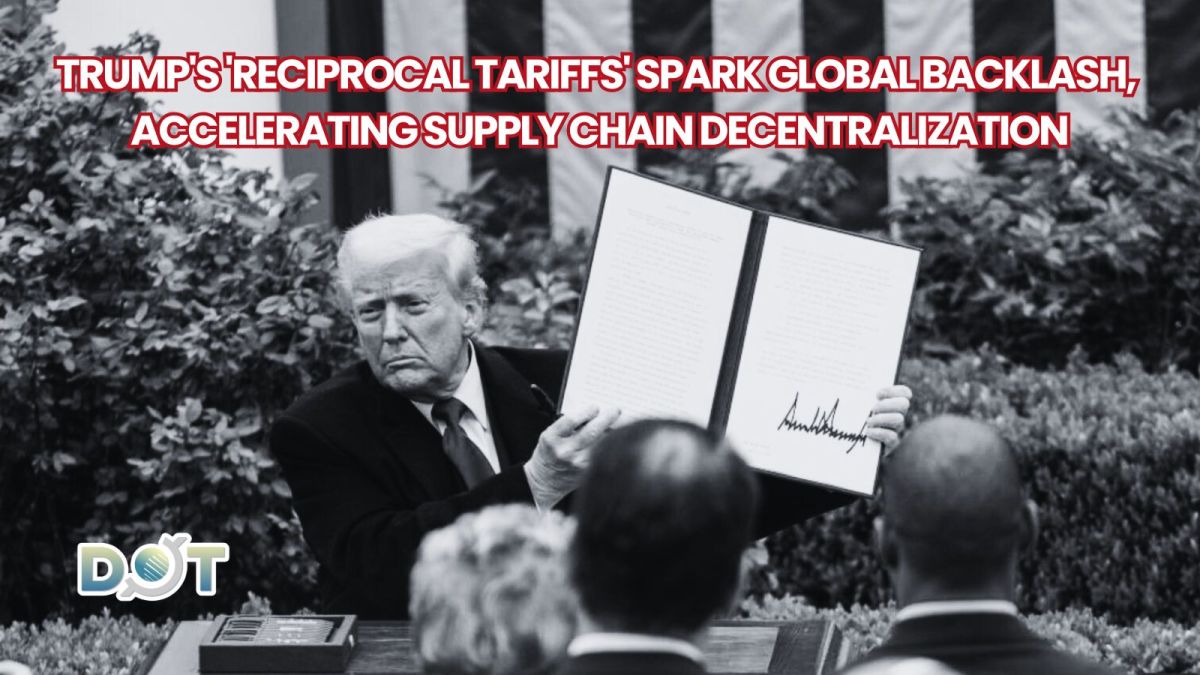
U.S. President Donald Trump's announcement of so-called "reciprocal tariffs" on global trading partners has triggered widespread opposition and concern. Traditional allies like the European Union and Canada swiftly vowed retaliatory measures, as Trump politicizes trade issues to serve his agenda of "Making America Great Again (MAGA)" and perpetuating U.S. hegemony. Such actions, which defy economic principles and undermine free trade, risk accelerating the "de-Americanization" of global supply chains. Meanwhile, China's dual-circulation strategy—boosting domestic demand while diversifying international trade ties—has proven increasingly effective in mitigating tariff impacts. Hong Kong, leveraging its role as a global connector, must deepen international collaboration to turn challenges into opportunities.
Unilateral Tariffs: A Self-Defeating Gambit
Trump's latest policy imposes additional tariffs of up to 54% on Chinese goods (including revoked exemptions for small packages from China and Hong Kong) and 20–40% on imports from Vietnam, Thailand, Indonesia, India, and even allies like Japan, South Korea, and the EU. This blanket approach, however, ignores the structural flaws in the U.S. economy, such as manufacturing hollowing out and chronic trade deficits—issues that tariffs cannot resolve. By weaponizing trade, Trump aims to shore up political support and revive domestic manufacturing, but economists warn it could spur inflation (UBS predicts a 5% U.S. inflation spike) and tip the global economy into recession. The Washington Post called the move a "political gamble."
Global Pushback and Regional Realignments
The tariffs have drawn fierce criticism from Italy, Brazil, Canada, and others, with many pledging countermeasures. Nations are increasingly bypassing the U.S. through regional partnerships: the EU and Mercosur recently finalized a landmark trade deal after 20 years of talks, while East Asian countries are accelerating trilateral free trade negotiations. As the U.S. isolates itself, its influence in global trade dwindles.
China's Resilience Through Innovation and Diversification
Amid escalating U.S. trade pressure, China has fortified its economic resilience by prioritizing domestic innovation, fostering new productive forces, and expanding trade with emerging markets. ASEAN and the EU have now surpassed the U.S. as China's top trading partners, accounting for over 46% of its total foreign trade. Professor Hui Kaixiang at Cambridge University notes, "U.S. tariffs will only push China closer to Europe, Southeast Asia, and Africa."
Hong Kong's Strategic Imperative
As external challenges mount, Hong Kong must capitalize on its unique role as a "super-connector." By strengthening ties with traditional markets while tapping into Global South and Belt and Road opportunities, the city can align with national strategies and drive growth. Chief Executive John Lee emphasized, "Hong Kong thrives amid global shifts—every crisis harbors opportunity."
In short, Trump's tariff bluster may rally his base, but it undermines global stability and America's own interests. As countries pivot toward multilateral cooperation, China's calibrated response and Hong Kong's adaptive prowess highlight a path forward in an increasingly fragmented world.
(Source: Wen Wei Po)
Related News:
China to impose additional 34 percent tariffs on all imported U.S. products starting April 10




















Comment